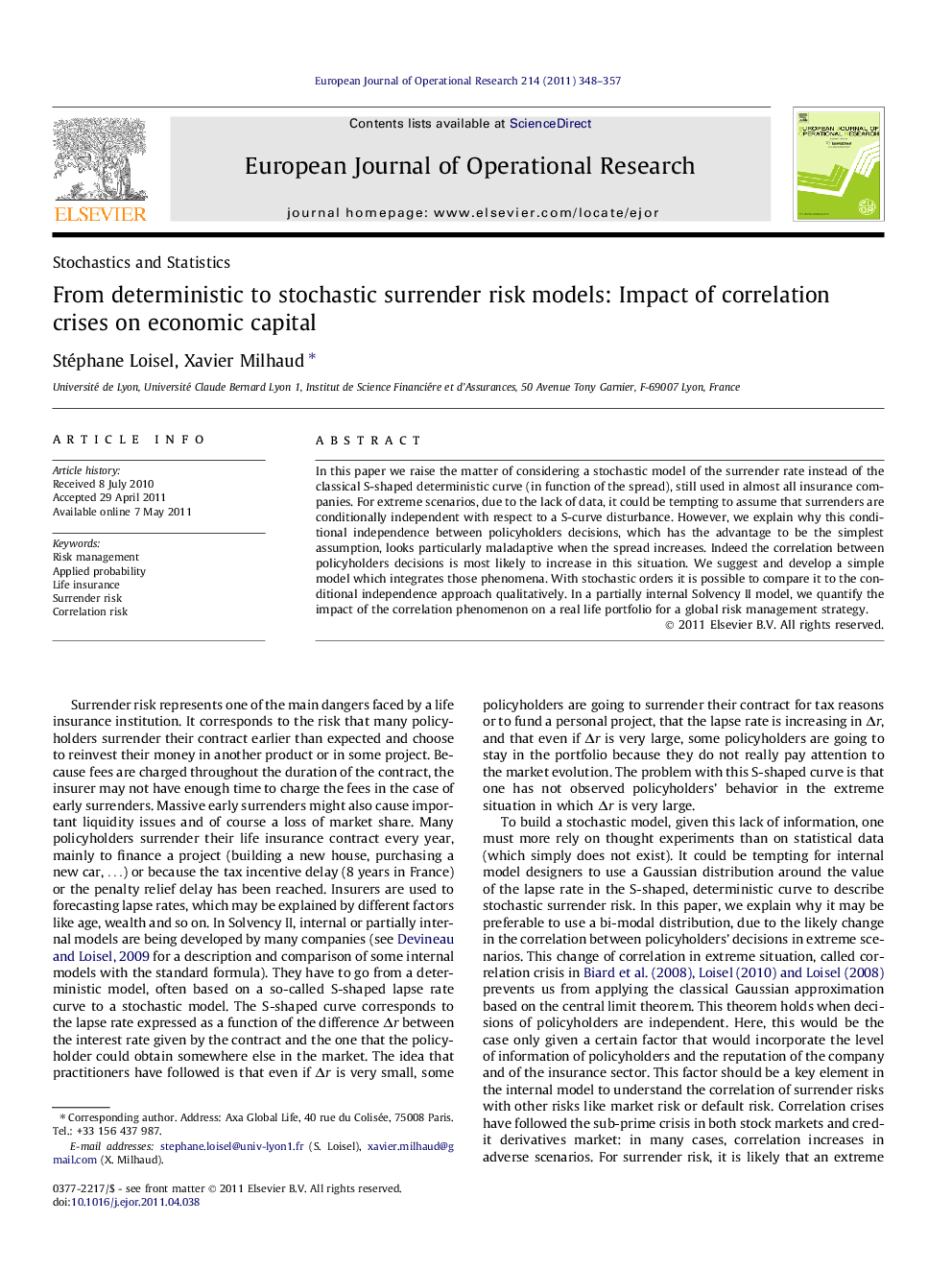| Article ID | Journal | Published Year | Pages | File Type |
|---|---|---|---|---|
| 476974 | European Journal of Operational Research | 2011 | 10 Pages |
In this paper we raise the matter of considering a stochastic model of the surrender rate instead of the classical S-shaped deterministic curve (in function of the spread), still used in almost all insurance companies. For extreme scenarios, due to the lack of data, it could be tempting to assume that surrenders are conditionally independent with respect to a S-curve disturbance. However, we explain why this conditional independence between policyholders decisions, which has the advantage to be the simplest assumption, looks particularly maladaptive when the spread increases. Indeed the correlation between policyholders decisions is most likely to increase in this situation. We suggest and develop a simple model which integrates those phenomena. With stochastic orders it is possible to compare it to the conditional independence approach qualitatively. In a partially internal Solvency II model, we quantify the impact of the correlation phenomenon on a real life portfolio for a global risk management strategy.
► Insurance companies have to go from deterministic to stochastic surrender models. ► Due to data shortage, it may be tempting to assume independent customer decisions. ► However, correlation crises are likely to appear during stressed scenarios: correlation may suddenly increase. ► We propose a model with correlation crises and analyze it thanks to stochastic orders. ► The potential effect is quantified for a real insurance portfolio.
